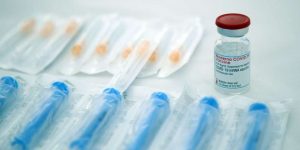Liberia: Govt Wants Donors Align Support With ARREST Agenda

The Government of Liberia is calling on international donors to align their support with the country’s (Agriculture, Roads, Rule of Law and Governance, Education, Sanitation and Health, and Tourism) Agenda in order to achieve long-term, sustainable development outcomes.
In a series of presentations held recently at a one-day high level Government-Development Partners Retreat (G-DPR), organized by the Ministry of Finance and Development Planning (MFDP), government officials outlined how the ARREST Agenda, which was launched on January 15, 2025, is poised to transform the country’s economy and social fabric through a strategic approach that includes a focus on economic transformation, infrastructure development, human capital, and good governance.
It was held under the theme: “Strengthening Partnerships for the Implementation of Liberia’s National Plan – AAID.” Liberia is currently charting a bold course toward inclusive and transformative growth through its new National Development Plan (NDP) 2025-2029, known as the Arrest Agenda for Inclusive Development (AAID).
The Development Partners Retreat serves as a strategic platform to strengthen partnerships, align priorities, and explore innovative funding models that support AAID and Liberia’s broader Sustainable Development Goals (SDGs).
Speaking recently on Liberia’s Economic Development Context, especially on the AAID, its coordination framework and priorities, Deputy Finance Minister for Budget, Madam Tanneh G. Brunson, outlined Liberia’s current economic realities and the strategic underpinnings of the AAID, describing the framework as both visionary and responsive to the nation’s development challenges.
“In order to provide another layer of support to Liberia, it was important to engage our partners, along with members of the government, to find creative ways to meet these challenges,” Brunson said.
“The AAID is aligned with our national vision 2030 and is also anchored in key global, continental, and regional frameworks. It demonstrates our unwavering commitment to peace, reconciliation, and prosperity,” she added.
She stressed the need for donor alignment with Liberia’s national priorities, noting that the ARREST Agenda is specifically designed to address the challenges that have hindered the country’s growth, including a narrow revenue base, high unemployment, and inadequate infrastructure.
“We are here today to explore creative solutions with our development partners to address the current economic challenges facing Liberia,” Brunson said. “The AAID not only aligns with our Vision 2030 but also anchors Liberia within broader global, regional, and continental development frameworks, underscoring our commitment to peace, reconciliation, and long-term prosperity.”
According to Brunson, the ARREST Agenda aligns with Liberia’s National Vision 2030 and is also supported by key global, continental, and regional frameworks, underscoring the government’s commitment to peace, reconciliation, and prosperity.
However, recent changes in donor support and shifting global economic conditions have exposed the fragility of these development schemes, and Brunson emphasized that the strategic alignment of donors is essential to ensuring sustainable progress.
“The challenges we face are significant, but with the support of our international partners, we can achieve our goals,” Minister Brunson emphasized. “We need to work together to ensure that the ARREST Agenda is not just a set of plans, but a living, breathing framework that leads to lasting impact for the people of Liberia.”
Also speaking, J. Wellington Barchue, Assistant Minister for Planning at the Ministry of Finance and Development Planning, further elaborated on the ARREST Agenda’s ambitious goals thereby by outlining the AAID’s key priorities, focusing on six strategic pillars: economic transformation, infrastructure development, rule of law, governance, environmental sustainability, and human capital development.
The plan seeks to raise Liberia’s GDP from $1.7 billion in 2027 to $6.5 billion by 2029 and to improve key human development indicators, such as life expectancy and maternal mortality.
The AAID identifies 23 strategic policies across 52 national programs, with 375 interventions targeting critical sectors, including agriculture, infrastructure, education, sanitation, and tourism. “To achieve these goals, both public and private investments are crucial, with a clear focus on expanding these key sectors that drive Liberia’s growth,” Barchue stated.
Furthermore, the AAID includes 10 “development filters” — cross-cutting issues such as youth employment, gender equality, digitalization, and peace and security — that are integrated into all interventions to ensure they are inclusive and impactful.
In response to Liberia’s shifting fiscal landscape, Barchue highlighted the government’s move from traditional line-item budgeting to a program-based system that links spending to measurable outcomes. This approach aligns with the Medium-Term Expenditure Framework (MTEF) and is designed to ensure more efficient use of resources while advancing the country’s development goals.
One of the most ambitious goals of the ARREST Agenda is to transition Liberia from a low-income country to a lower-middle-income country by 2029. This goal will be supported by a focus on improving health outcomes, particularly maternal health, with a target of reducing maternal mortality from 472 deaths per 100,000 live births to 440 deaths per 100,000 live births by 2029.
The ARREST Agenda is organized around six key pillars: economic transformation, infrastructure development, governance and anti-corruption, environmental sustainability, human capital development, and rule of law. Barchue outlined that each pillar contains strategic policies aimed at addressing the country’s most pressing challenges. Among the 23 strategic policies outlined in the ARREST Agenda, some of the most critical focus on increasing investment in education, healthcare, energy infrastructure, and job creation.
For example, in the education sector, Barchue stressed the importance of building human capital by enhancing teacher capacity and improving access to quality education for all Liberian children. “We plan to introduce teacher licensing and provide 200,000 tablets for secondary school students, pre-programmed with instructional materials to enhance learning,” Barchue said.
In the healthcare sector, the government aims to reduce the cost of healthcare for vulnerable populations by introducing health equity funds and improving access to reproductive and maternal healthcare services.
A key part of the ARREST Agenda’s success lies in a coordinated approach between the Liberian government and its international partners. To facilitate this collaboration, a comprehensive coordination framework has been put in place.
The government has established a National Steering Committee, which is chaired by Liberia’s President, with the UN Resident Coordinator serving as the vice chair. The committee, which also includes representatives from major international development organizations such as the World Bank, IMF, African Development Bank, and the EU, will meet regularly to ensure that donor efforts are aligned with Liberia’s national development priorities.
“The coordination structure ensures that both the government and our development partners’ work in synergy to achieve the outcomes outlined in the ARREST Agenda,” said Barchue. “This collaborative approach is critical for ensuring that investments in infrastructure, education, health, and other sectors are directed toward achieving long-term impact.”
The ARREST Agenda emphasizes the importance of key sectors in driving Liberia’s economic growth. The agriculture sector, for example, will focus on improving food and cash crop production, enhancing livestock and poultry, and promoting climate-smart agriculture.
In the infrastructure sector, priorities include the expansion and modernization of road networks, particularly in rural areas, as well as the development of energy resources, including hydroelectric power plants.
“The expansion of our road network is a priority, with a target of building 500 kilometers of primary roads by 2029,” said Barchue. “We are also focused on improving energy access, with plans to expand the Mount Coffee Hydro Power Plant and integrate renewable energy sources across the country.”
Meanwhile, the AAID envisions lifting Liberia to lower-middle-income status by 2030, while promoting inclusive growth, youth employment, rural development, and resilience in the face of global economic shifts.
By Liberian Observer.



